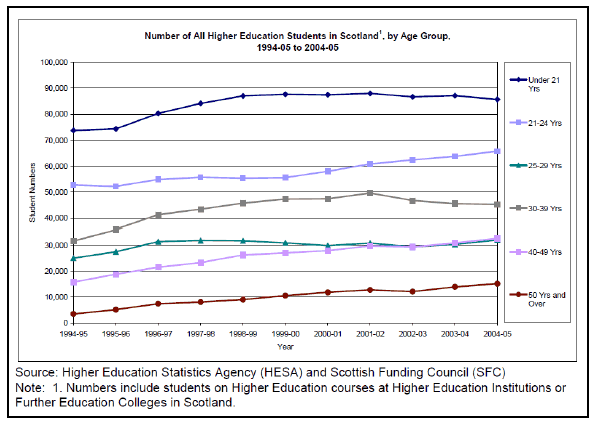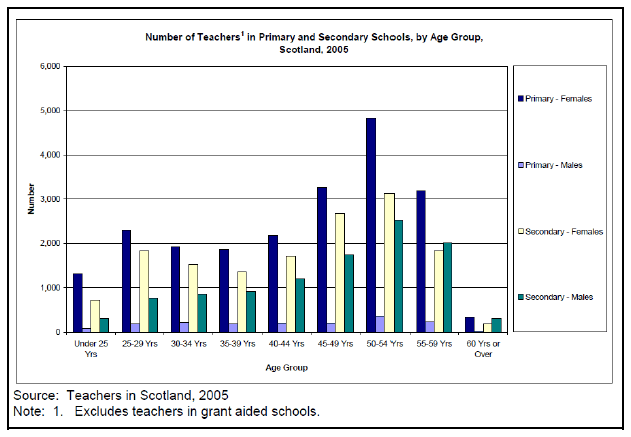Scottish Government Equality Outcomes: Age Evidence Review
This evidence review was prepared to support the production of the Scottish Government's Equality Outcomes, with regard to age.
3 Education
3.1 This section summarises the findings on educational qualifications and further and higher education.
Educational qualifications by age group
3.2 Dividing working-age adults into age categories, those in the 25-34 age group are most likely to be educated to at least degree level (34%)[5]. Those in this age group are also the least likely to have no qualifications (8%). Those in the most senior working age category (55-59 year-old women and 60-64 year-old men) are the most likely to have no qualifications (33%). Apart from the 16-24 age group, this group was also the least likely to be educated to degree level or above (19%).
3.3 The findings for low qualifications are echoed by the National Indicator data from Scotland Performs[6]. These report that the proportion of adults with low or no qualifications is strongly associated with age. Over a quarter of 60-64 year olds have no or low qualifications, which compares to around a tenth of those aged below forty.
Further and Higher Education Students
3.4 Young people under 21 make up 36% of all entrants to higher education[7].
3.5 The majority of further education students study part-time (75%) and of these students, the largest age group is 25-59 year olds (45%). Of the full-time further education students (25%), the largest age group is the 16-18 year olds (44%). The second largest group is the 19-24 year olds (32%), followed by the 25-59 year olds (21%)[8].
3.6 Older data show that between 1998-99 and 2004-05, the number of enrolments into further education increased most markedly for those aged 50 years and over, up 72% from 42,460 to 73,215[9].
3.7 The High-level summary of equality statistics[10] plots trends in higher education by age (see Figure 2). Since 1994-95, the number of higher education students studying in Scotland has increased across all age groups. The largest increase has been for students aged 50 years and over, more than a four-fold increase from 3,515 in 1994-95 to 15,145 in 2004-05, and this is followed by students aged between 40 and 49 years, who have more than doubled from 15,810 in 1994-95 to 32,630 in 2004-05. As would be expected, the highest proportion (over 50%) of all higher education students are aged 24 years or less, in 2004-05.
Figure 2: Higher education students by age

The teaching profession
3.8 The High-level summary of equality statistics[11] plots the number of school teachers by age (see Figure 3). More than a third of male and female primary and secondary school teachers were aged between 50 and 59 years in 2005. There were fewer male and female teachers in the younger age groups, most notably those aged under 25 years.
Figure 3: Teaching profession by age

Contact
Email: Social Research
There is a problem
Thanks for your feedback